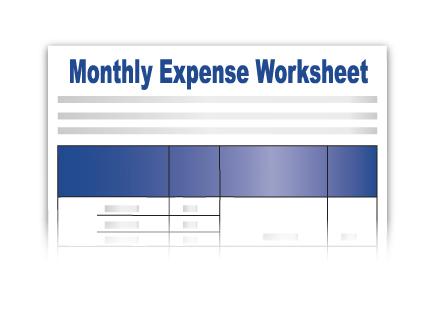Tips and Strategies for Retirement Planning
The sources of income you may have for your retirement are often compared to a 3-legged stool: one leg is your pension, the second leg is Social Security, and the third leg is your personal savings. Here are some ideas to consider for growing your personal savings.
Create a Monthly Budget
A monthly budget is an invaluable tool for tracking how much money you have coming into your household, and how much money is being spent. This is commonly referred to as cash flow. The goal of every worker is to have a positive cash flow, meaning your income is greater than your expenses, leaving you with a surplus of cash at the end of every month which you can then save or invest. A negative cash flow occurs when more money is being spent than brought in to the household, leaving you strapped for cash at the end of the month. In many cases this shortfall of cash is supplemented with high interest credit card debt, or dipping into savings or retirement accounts.
To create your monthly budget, use this sample worksheet as a guide to list all of your monthly expenses.
Download Sample Monthly Expense Worksheet
 After adding up all of your expenses, subtract your Total Monthly Net Income (after taxes and deductions) from your Total Monthly Expenses. If the result is a negative number, review your expenses and decide where cuts can be made. Set goals for yourself to eliminate unnecessary spending and try to identify areas where you can get a better price for similar products or services. One example might be to downgrade your cable subscription, or replace it all together with a streaming service.
After adding up all of your expenses, subtract your Total Monthly Net Income (after taxes and deductions) from your Total Monthly Expenses. If the result is a negative number, review your expenses and decide where cuts can be made. Set goals for yourself to eliminate unnecessary spending and try to identify areas where you can get a better price for similar products or services. One example might be to downgrade your cable subscription, or replace it all together with a streaming service.
Make Saving a Habit
One of the most important steps you can take toward reaching your financial goals for retirement is getting into the habit of saving. Get in the habit of setting aside a small fraction of your paycheck and try to increase that amount over time by eliminating unnecessary expenses from your monthly budget.
Make Your Money Work for You
When it comes to saving, your two best friends are time and compounding interest.
The money you save in a savings account, in your 401(k) plan, mutual funds or Deferred Compensation (Deferred Comp) account, earns interest or investment earnings. When you leave the money there, over time you also earn interest on your interest, or earnings on your earnings.
Example:
You place $1,200.00 into an account that gives you 5% interest compounded annually. At the end of the first year, your first interest payment is $60.00, giving you a total of $1,260.00. Remember that the interest rate is always added to the total balance of your account. This means that at the end of Year 2, you will earn 5% interest on $1,260.00. As a result your interest payment rises to $63.00, giving you a total of $1,323.00.
As you can see in the table below, these interest payments continue to grow as long as you do not withdraw anything from the account. Just by leaving your initial deposit of $1,200 untouched, the interest earned over the course of 10 years totals $754.67.

However, to take full advantage of compounding interest, it is important to save habitually and regularly. The chart below shows what happens with a savings goal of $100.00 every month, equaling $1,200.00 per year for 10 years.
As you can see, the compounding interest earned by saving regularly can significantly boost your retirement nest egg. At the end of the 10-year period, the $12,000 you saved from your earnings earned $3,499.21 in interest payments, giving you a total of $15,499.21.
Get an Early Start!
Although it is never too late to start saving, starting early will allow your savings more time to grow.
A 20-year-old who saves $1,000 a year for 11 years in a row, then stops but leaves the money there to earn 7% interest, will have $168,514 at age 65.
However, a 30-year-old who starts saving $1,000 a year for 35 years, also earning 7%, will have only $147,913 at age 65. Even though the 30-year-old has put in more money for more years, the money has less time to earn that compound interest.
(Source: The Department of Labor, dol.gov)Explore Additional Resources for Planning Retirement
Financial Planning Seminars
The Financial Planning Center was established by the Office of Labor Relations to provide free educational seminars for City of New York employees. The Financial Planning Center currently offers more than a dozen seminars, presented by Certified Financial Planner™ professionals at its on-site location at 22 Cortlandt Street.
Register for your free financial planning seminar today.
New York City Deferred Compensation Plan (Deferred Comp)
If you are a member of the pension system and expect to collect Social Security during retirement, you may be wondering whether a Deferred Comp account will benefit you. While a pension and Social Security provide a foundation for retirement, these two income sources alone may not be enough to live comfortably and cover expenses adequately.
Find out how to include deferred compensation in your retirement plans.
New York City Employee IRA
The New York City Employee Individual Retirement Account (NYCE IRA) is a tax-favored retirement savings vehicle. The NYCE IRA includes both a traditional IRA and a Roth IRA for the exclusive benefit of employees and former employees of the City of New York and their respective spouses.

